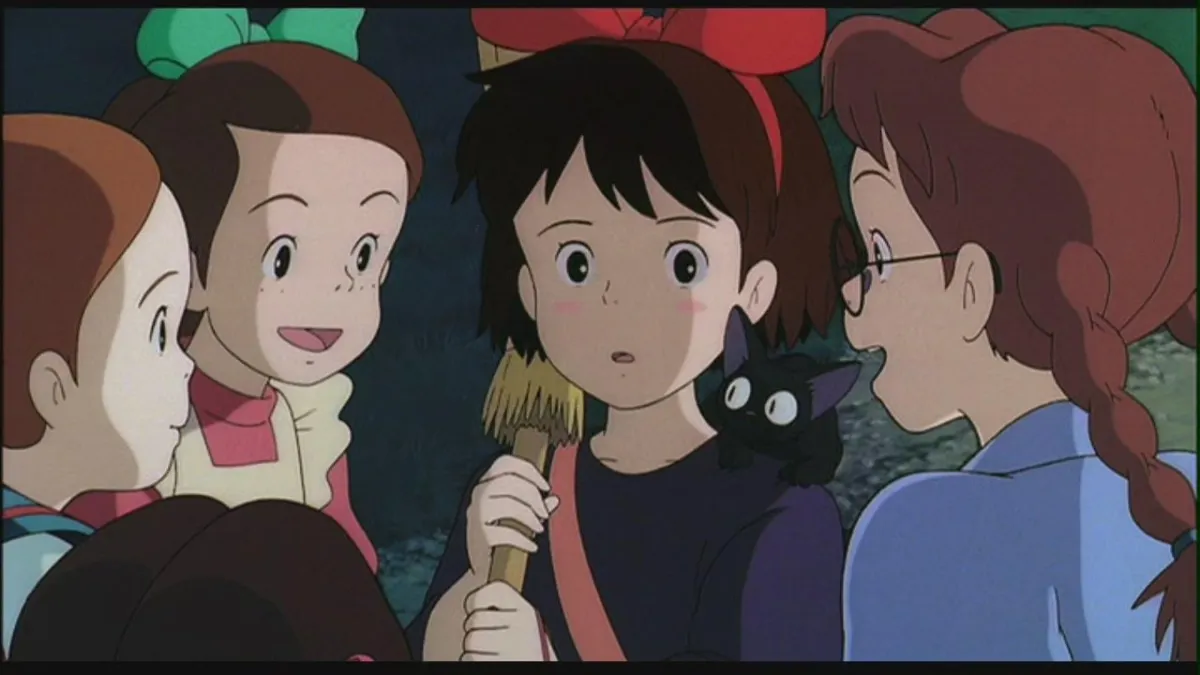The three girls sitting across from me screamed, jumping up and pointing behind me with terror. Crowds of chattering students went silent and turned to stare. My friends began to walk backward, leaving me behind with eyes wide open.
I glanced back, worried that I was in danger, that the Grim Reaper was causing this display in the middle of my college’s quad. Instead, what I found was this: a little black cat walking up behind me. Her bright green eyes were gleaming in the sunlight. Her tail moved, wave-like, in the air.
“Hi, there!” I gushed, unable to resist.
I got up from my spot and met the ink-colored feline halfway. She reminded me of my black boy cat back home, which made me teary-eyed since this was my very first week away at college. Nostalgia has always had a powerful effect on me.
I sat down on the hot blacktop that surrounded the grass, while the cat allowed me to pet her. She maneuvered around me in circles, rubbing her nose against the curves of my arm.
“Anna, you’re just like Kiki!” screamed one of my companions, creeping closer.
“Kiki?” another questioned.
“You know, the witch.”
Instantly, I was taken back along the timeline of my life.
– – –
We didn’t have a lot of channels on our boxy black television. If I remember correctly, there were only ten. I was about three years old at the time, so this lack of variety made no impression on my desires. I only cared about the one kid’s channel; the one that would occasionally show anime movies and TV shows.
I can recall two works of anime from those days: Sailor Moon and Kiki’s Delivery Service. The latter was only shown once and I never forgot the moment that I first became acquainted with Kiki.
She was the first young girl that I put on a pedestal, imprinting her in my mind as a role model. I thought, “She’s as good as the boys.” Kiki was fearless, enchanting, and independent.
Although I did not know it at the time, Kiki was the spark that lit the fire of my feminist awakening. This character made me proud to be an unusual little girl. To be someone who liked to catch frogs in a dress, wear miniature men’s construction boots, and dance around the front yard naked. Kiki made me want to continue dancing, in all respects.
This anime witch taught me that it was (and still is) okay to embrace my quirks and even better if I can find freedom within them.
– – –
As the screen pans across a hilly landscape, we see a young woman lying upon the grass. She is wearing a green dress and pink apron. Her attention in focused on a red radio, which is relaying the evening’s weather report.
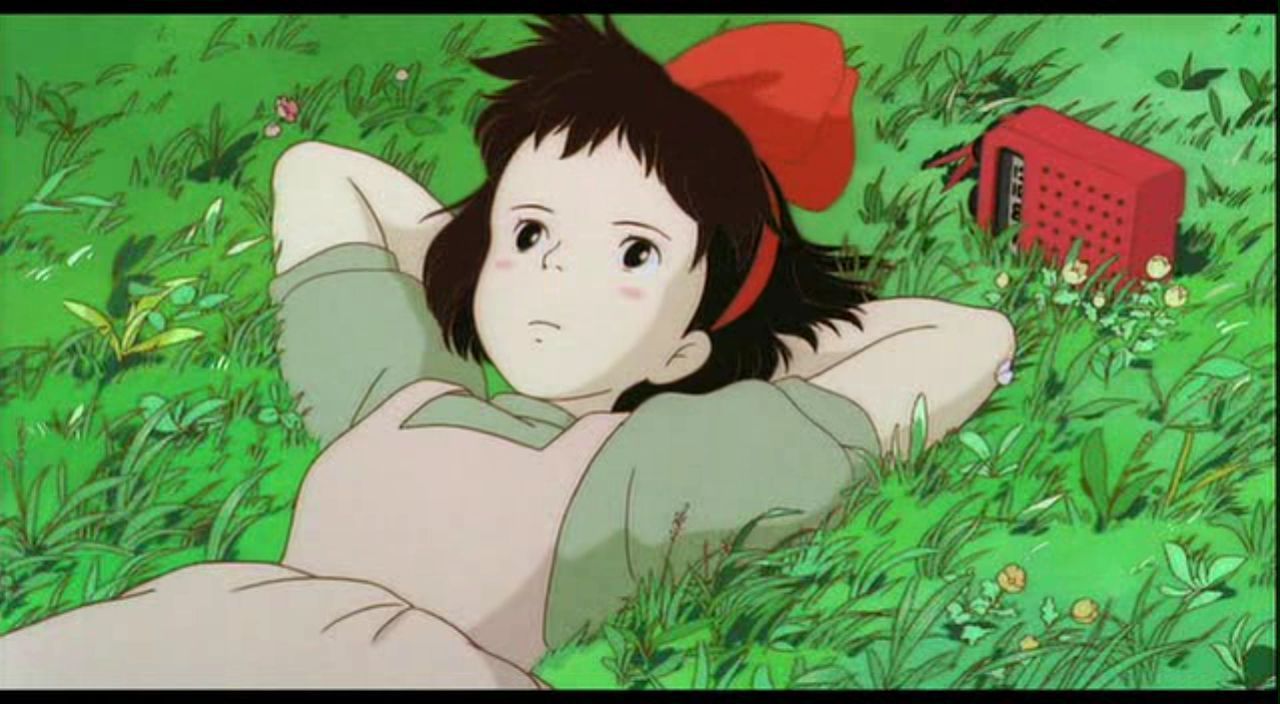
When she hears that it is going to be a perfectly clear night, she runs home with abandon. Once there, she tells her parents that she is leaving and that is that. “I want to leave on the perfect midnight!” she exclaims.
I couldn’t help but think of Cinderella, whose magical journey comes to a close when the clock strikes 12AM. In this fairy tale, a young girl is oppressed by midnight, returning back to a dreary life that confines her ambition. Kiki, on the other hand, begins her journey at midnight, taking off on a broom into the nighttime sky.
Our heroine is 13-years-old, which is the age that a young witch must leave home on her own to begin her training. She has no plan, but she has faith in herself, which is something that many adolescents struggle with as they come into their own.
Within the film’s first 10 minutes, we witness Kiki flying a broom for the first time. She has a determined look on her face as she mounts her mother’s broom. The wind blows from beneath her, lifting her into the air in an act of liberation. In the process, you can see her white bloomers from beneath her loose-fitting black dress, which reminds me of my own fearlessness when it came to running around naked as a child.
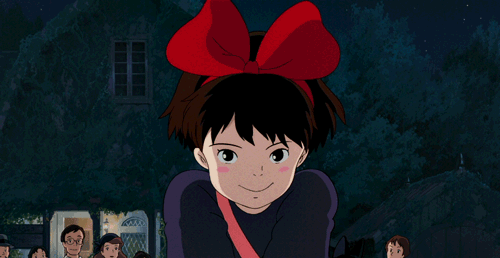
Kiki soon makes it to a waterside town, falls in love with this destination, and plans to make this her new home. Her black cat Jiji, who doubles as her companion, attempts to discourage her (which he does quite a lot), but she ignores him and pushes forward.
Since Kiki is not an experienced flyer, she has trouble landing in this new place and gets in trouble with a (male) police officer. A boy named Tombo helps her get out of trouble and tries to pursue her further. This is the first time we see Kiki interacting with a youthful member of the opposite sex.
Before Tombo can finish speaking, Kiki’s expression darkens and she states, “Thank you for getting me out of trouble, but I really shouldn’t be talking to you, and you wanna know why? It’s very rude to talk to a girl before you’ve been introduced and before you know her name. Humph!” For the record, if you experience catcalling and are looking for a spot-on response, I would consider this one.
Although Kiki has experienced many (SO MANY) setbacks thus far, she keeps going and comes across a pregnant baker, who is looking to return a pacifier to one of her customers. Kiki volunteers to help, courageously jumping off the side of a cliff and flying down to meet the woman and her child.
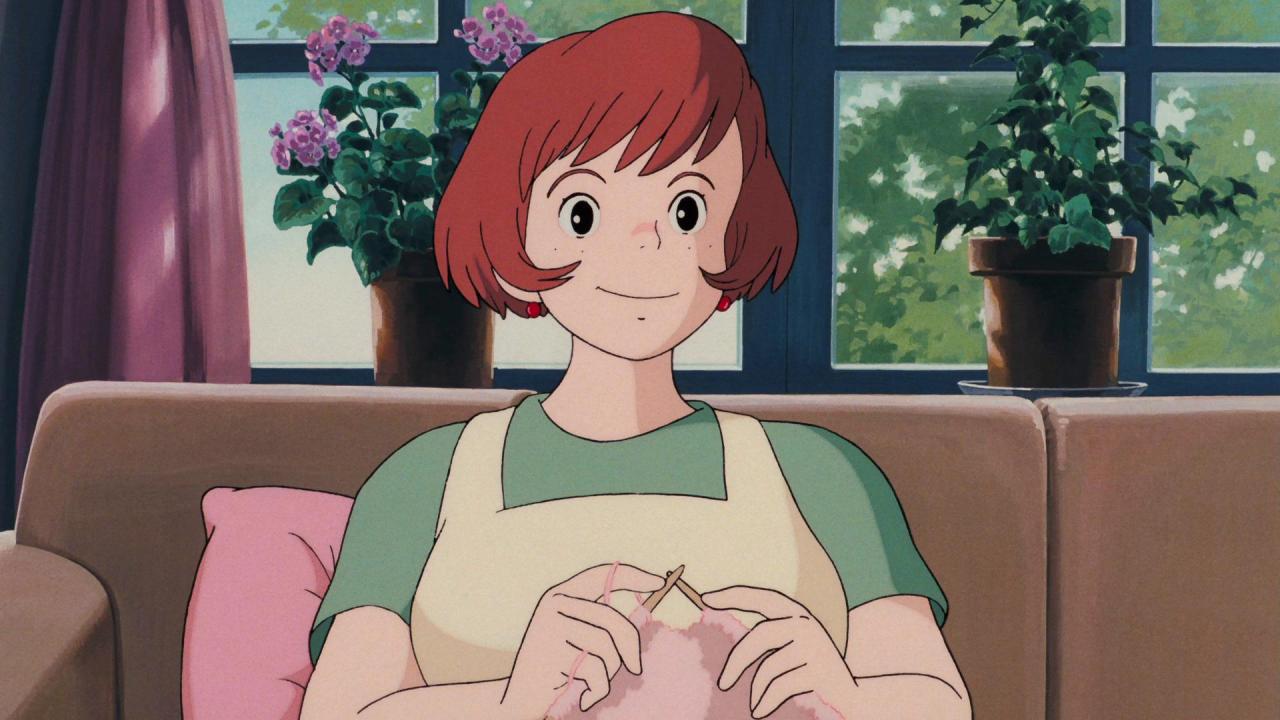
This brave favor causes a chain reaction, allowing Kiki to live in Osono the baker’s upstairs apartment and to work at Good Cooking Pan Bakery. Next, we continue to see an example of female friendship when Kiki proposes that she start her own delivery service. Osono instantly agrees to this idea and even offers Kiki her phone, which she can use for orders.
In her new role, Kiki functions as an adult, proving that age does not matter as she journeys into adulthood. She manages her own business, goes food shopping, and cares for herself and Jiji.
On her first delivery, Kiki meets a female artist, who (like Osono) helps her through hardship. Ursula the artist commends Kiki on her independence. So far, we have come across several independent women who run their own businesses and act as a mother figure to Kiki.
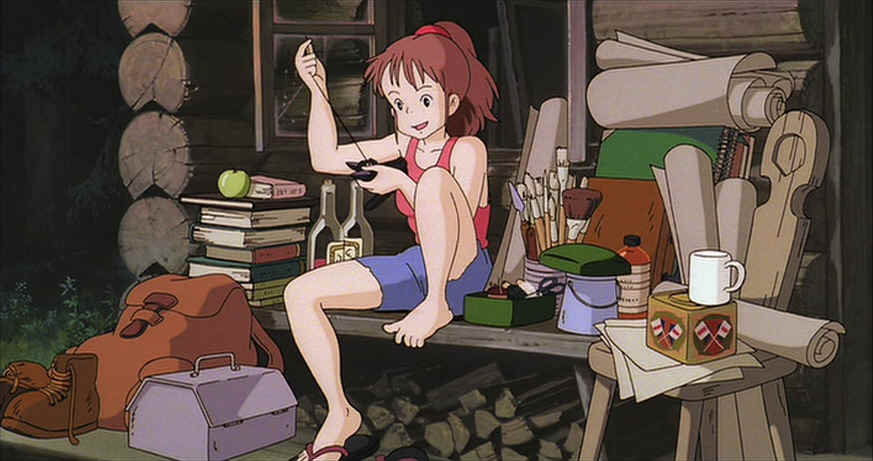
Quite a few women (the only man is her father and, later on, Osono’s husband) have supported Kiki in her endeavors, despite her age, allowing her to grow as an individual. Personally, I find that this perfectly captures one distinct aspect of feminism: women helping women to find higher ground.
This support especially comes in handy when Kiki faces her biggest setback yet. After a particularly hectic delivery in the rain, Kiki ends up missing a party that Tombo sent her an invitation for, which was addressed to a “Miss Witch.” In a downcast turn of events, Kiki becomes ill and depressed.
Even though Osono barely knows Kiki and is caring for herself, her own business, and her unborn child, she spends time working to make Kiki feel better. Here, we see a strong woman who is an example of a working mother.
After Kiki’s sickness subsides, Osono sends her out on a delivery. Once there, Kiki realizes that the baker set her up to meet with Tombo, who invites her out for a ride on his man-propelled plane (which, at this point, is basically a bike with an attached propeller).
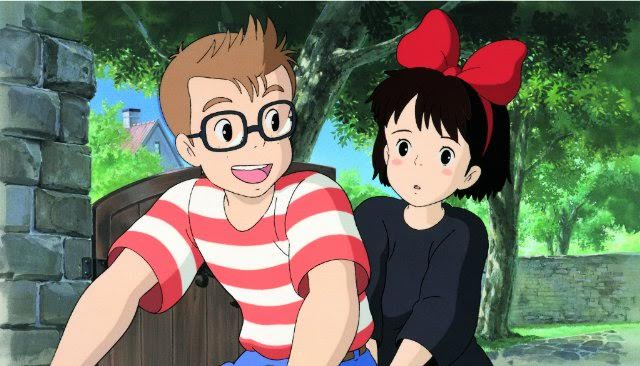
It is interesting to watch Kiki in the backseat for a change, as she leans left and right to help steer the bicycle. Note: she is still exercising control. “We’re quite a team!” states Tombo. As I watch them together, I can’t help but think of Emma Watson’s HeForShe initiative, representing the equality that is a focal point of feminism.
The next obstacle: Kiki loses her powers. She can no longer hear Jiji speak. As for her mother’s broom, it no longer lifts her into the air. While attempting to fly, Kiki actually ends up breaking it in half, signifying that a key part of her life is over. As a whole, Kiki sums up her experiences by stating that she feels like an outsider.
To continue our “girl gang” theme, Ursula returns and immediately invites Kiki to stay with her when she finds out about her troubles. Along the way, both are playful and childlike, allowing Kiki to reconnect with her girlhood and to start anew.
When the pair arrived in the countryside, I was intrigued by the fact that Kiki instantly looked better. She breathed in the fresh air and seemed to find energy in nature. I, myself, can relate to this and often identify with the term “ecofeminism,” which is: a philosophical and political movement that combines ecological concerns with feminist ones, regarding both as resulting from male domination of society. In other words, ecofeminism connects female oppression with the degradation of Mother Nature (emphasis on the mother part).
The two women begin hitchhiking and catch a ride with an older gentleman, who – right on cue – states that he thought Ursula was a boy. Maybe it has something to do with the fact she gives off an in-charge female warrior vibe? A vibe that has not traditionally been associated with women.
Before bed, the duo has a heart-to-heart and Kiki expresses her worry, since flying used to come naturally to her, but now she has to look inside herself to figure out how she did it in the first place. Ursula can relate to these feelings because she struggled when coming into her own as an artist. Kiki then comments, “We fly with our spirit,” and Osono reiterates this when she explains that we each need to find our own inspiration, just like her and Osono did in art and baking, respectively.
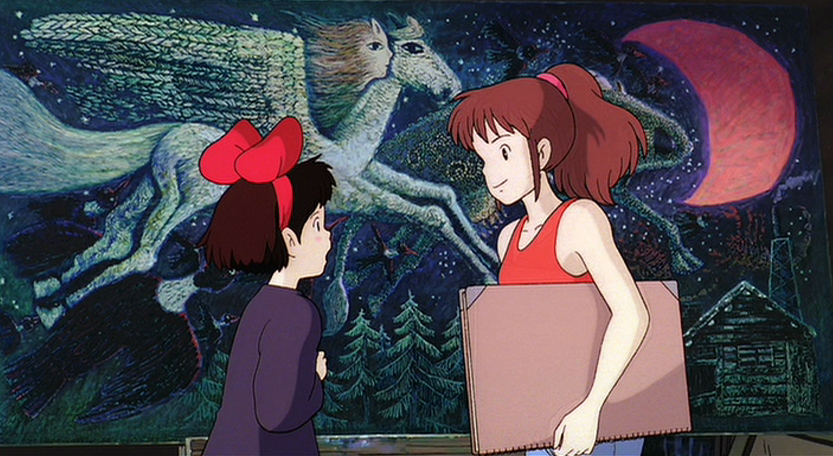
At this point, I was reminded of something that I heard Tracee Ellis Ross discuss on her YouTube channel. She was talking about how when women are stressed, we should listen to music and sway our hips. Because our power comes from this part of our body (I’m assuming that she was referring to the uterus). In this sense, I imagine that Kiki and Ursula were speaking similarly, referring to the power that women hold within.
Right when Kiki returns home, the peak of our heroine’s journey unfolds. A local dirigible is taking off, but tips over as a windstorm comes out of nowhere. Tombo, who was helping to hold the aircraft down, gets stuck on one of the ropes as he dangles in the air.
Kiki runs to save him. She grabs a man’s broom (not waiting for his permission and acceptance), takes off toward the dirigible, and heads in the direction of the town’s clock tower, which is adjacent to Tombo. Ironically, this same tower is what inspired Kiki to live here in the first place, so we are definitely coming full circle in this moment.
The crowd cheers from below, “Don’t give up!”
Tombo lets go of the rope, propels to the ground and – of course – Kiki saves him just in time.
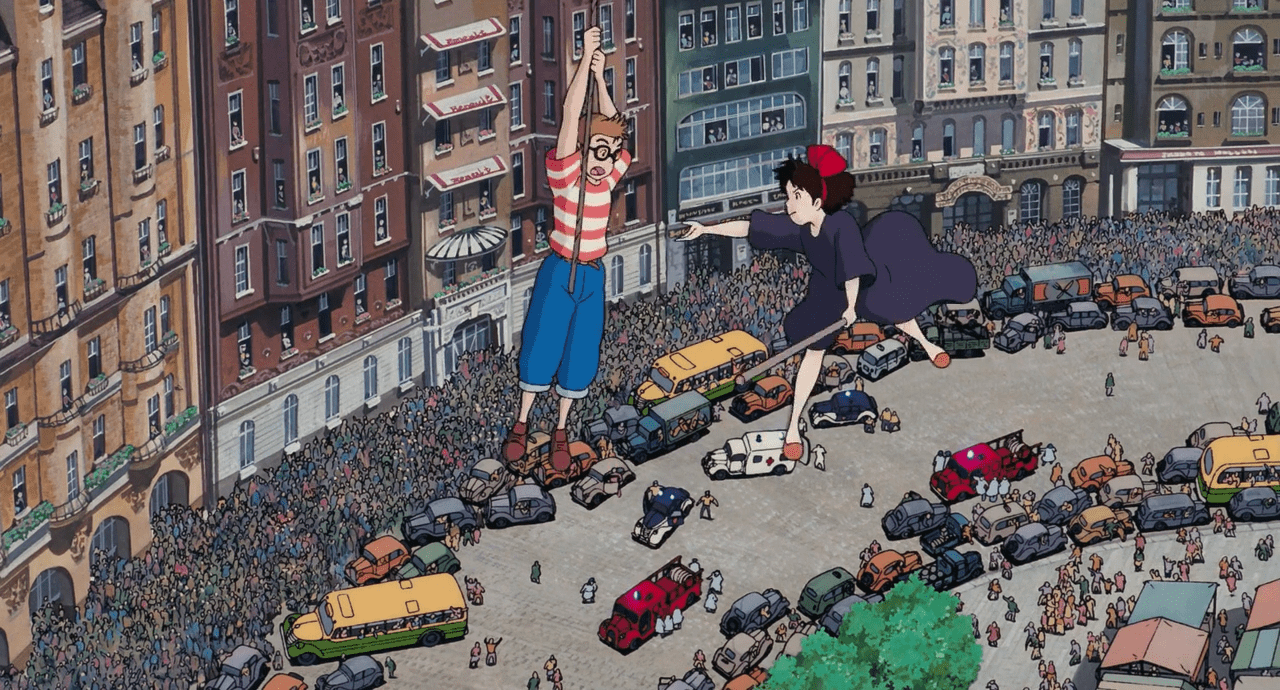
The movie ends with Tombo flying his plane and Kiki flying her new broom alongside him. This broom looks different from her mother’s. In fact, it is the same broom that she used when rescuing Tombo, which, in my opinion, is the ultimate homage to her newfound womanhood.
As Kiki walks along the street, she notices that little girls are now dressing like her. At this stage, see that Kiki has passed her feminism down to the next generation, inspiring other young girls to embrace their own powers and peculiarities.
– – –
Although this movie is not directly associated with feminism, it appears connected in my eyes. We have a young heroine who takes charge of her own future when most teen girls are too busy trying to figure out where they stand in a world that struggles with equality.
As children, girls are not always aware of the sexism that is unfortunately present in society. Around the age of 13, this obstacle often becomes apparent, since that is when we edge toward womanhood.
No matter how old I was, I’d never felt scared of witches (and their symbolic archetype) because they reminded me of myself, and Kiki was no different. She reminded me of the potential that I felt within, of my own curious behavior. Kiki inspired me to embrace every part of my being, even the weird parts that made me feel like I did not belong.
It is thanks to Kiki that I never lost touch with my inner strength. It is thanks to Kiki that I learned what it means to be a feminist and a woman: it means that you are to be yourself, even in the face of difficulty.
When Anna Gragert isn’t trying to create a groundbreaking third-person bio for herself, she’s writing, catering to her little black cat, or dreaming about abandoning all of her worries to become a shaman. Follow Anna on Twitter (@Anna_Gragert) to keep up with her adventures in all things human/creative.
—Please make note of The Mary Sue’s general comment policy.—
Do you follow The Mary Sue on Twitter, Facebook, Tumblr, Pinterest, & Google +?



